“I am not a number; I’m an action figure!”
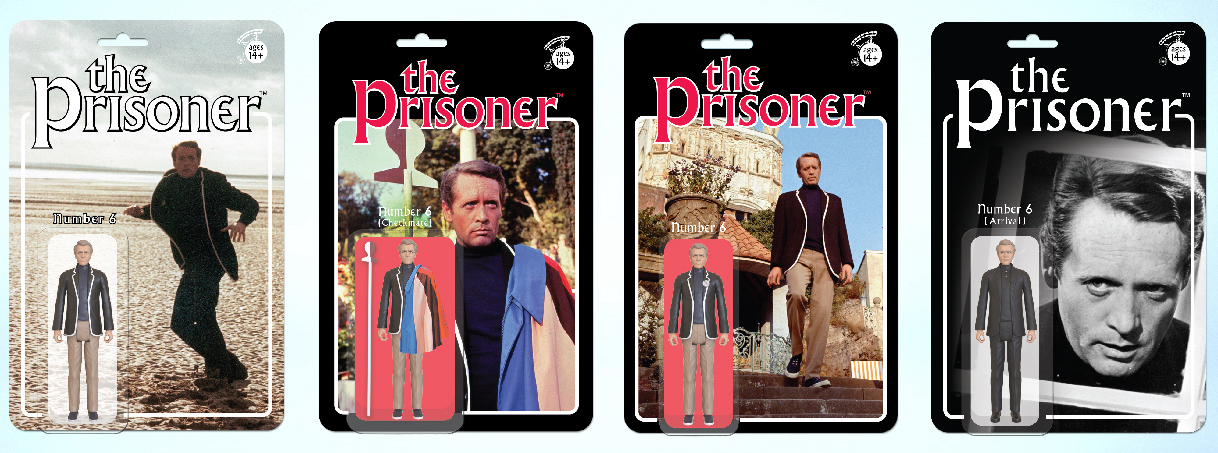
You mighta heard in your travels over the last week or so that the first-ever officially licensed action figure line based on The Prisoner — the ’60s cult classic television show starring and created by Patrick McGoohan — is headed to your own particular Village.
Wandering Planet Toys’ Kickstarter is live now — click here — so get in while the getting is good. There’s a whole raft of different sets and packages to please even the most skeptical former intelligence agent.
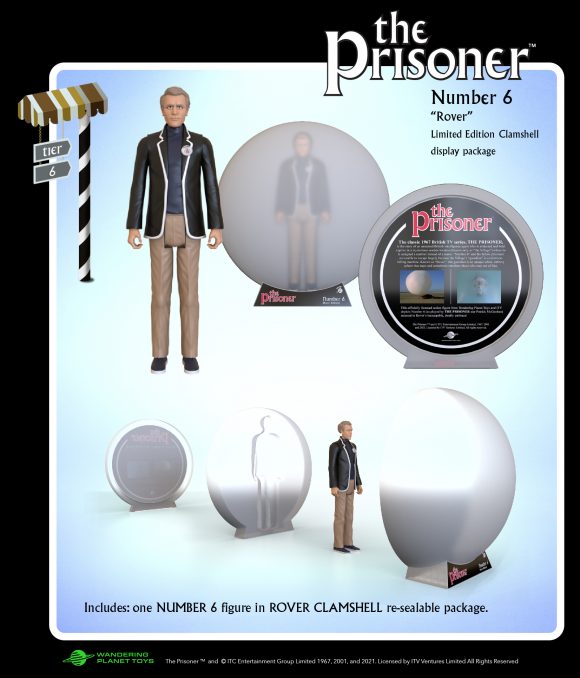
Meanwhile, company co-founder Chris “Doc” Wyatt — who produced Napoleon Dynamite and is big in animation (among many writing credits is the superb Avengers: Earth’s Mightiest Heroes) — is here with a really thoughtful and engaging 13 REASONS TO WATCH THE PRISONER.
But, wait there’s more! We’ve got EXCLUSIVE production art for the action-figure line to show off, as well. (See below.)
Anyway, don’t forget that this weekend is PortmeiriCon 2021, the annual celebration of The Prisoner; it will be held virtually both April 24 and 25.
Right on.
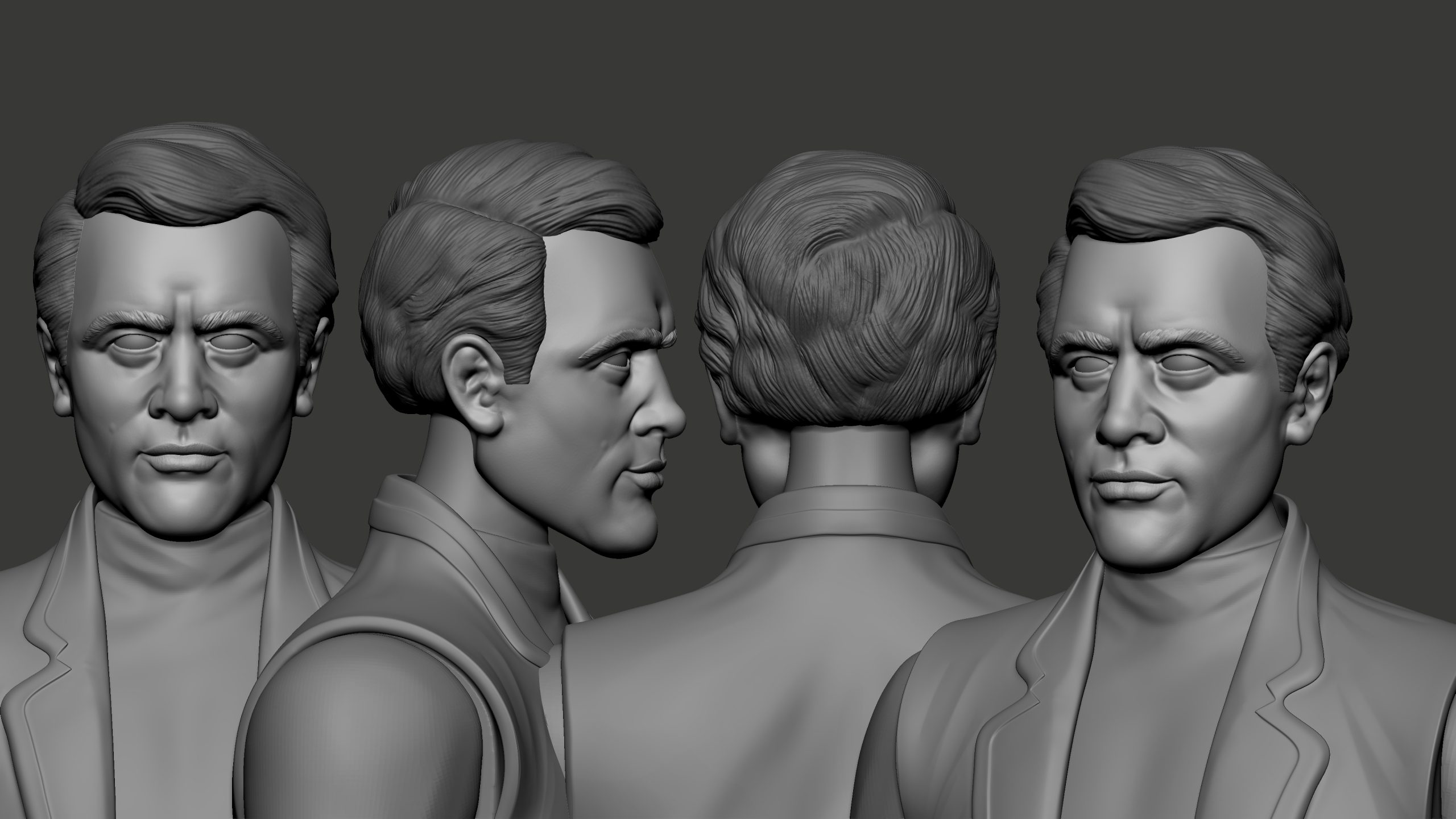
By CHRIS “DOC” WYATT
1. It’s Ahead of Its Time. On one level, The Prisoner is a simple mystery show. An unnamed British intelligence agent, who recently quit his job, gets gassed and abducted, waking up in a charming little village on a mysterious island from which there’s no escape. The residents of the island are given numbers instead of names. Our hero, “Number 6,” runs up against the leader of the island (“Number 2”) who constantly interrogates him, demanding to know why the agent quit his position.
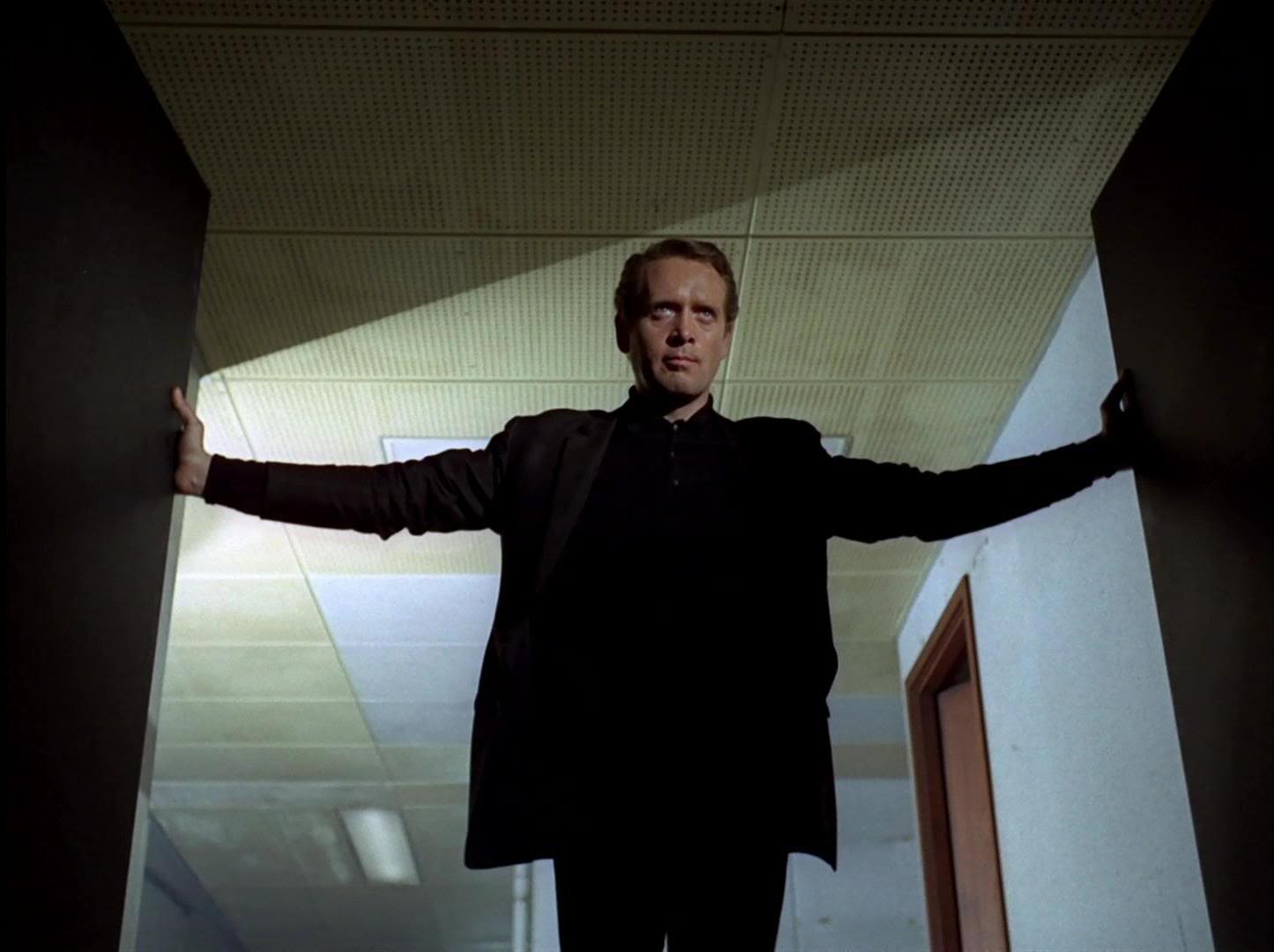
Number 6 knows nothing about where he is, or why he’s here. He doesn’t even know if the Village is run by his enemies, or by his own government. But that’s just the plot; the show quickly becomes an allegorical tale about privacy (and surveillance) in a world of modern technology, about government overreach, about the nature of democracy, about secrets and lies, about who to trust, about telling the difference between fake and real information, and about so much more…
At its most pitched moments, the series becomes part paranoia and part fever dream. Honestly, though it was shot in 1967, The Prisoner feels more relevant to 2021 than most of the shows coming out now. The word “visionary” gets flashed around a lot, but it fits for The Prisoner.
—
2. It Glories In the Surreal. The series, created by its star, Patrick McGoohan, was designed to be mind-blowing, and 50-plus years after its first airings, it still is. Everyone in the Village wears badges with their numbers (no names are spoken) on their lapels. When the authorities command them to, the Villagers suddenly freeze in place. Anyone attempting to escape the Village is stopped, and subsumed, by the Village’s “guardian” — an amorphous white sphere named “Rover.” People are routinely reprogrammed in mind-altering ways.
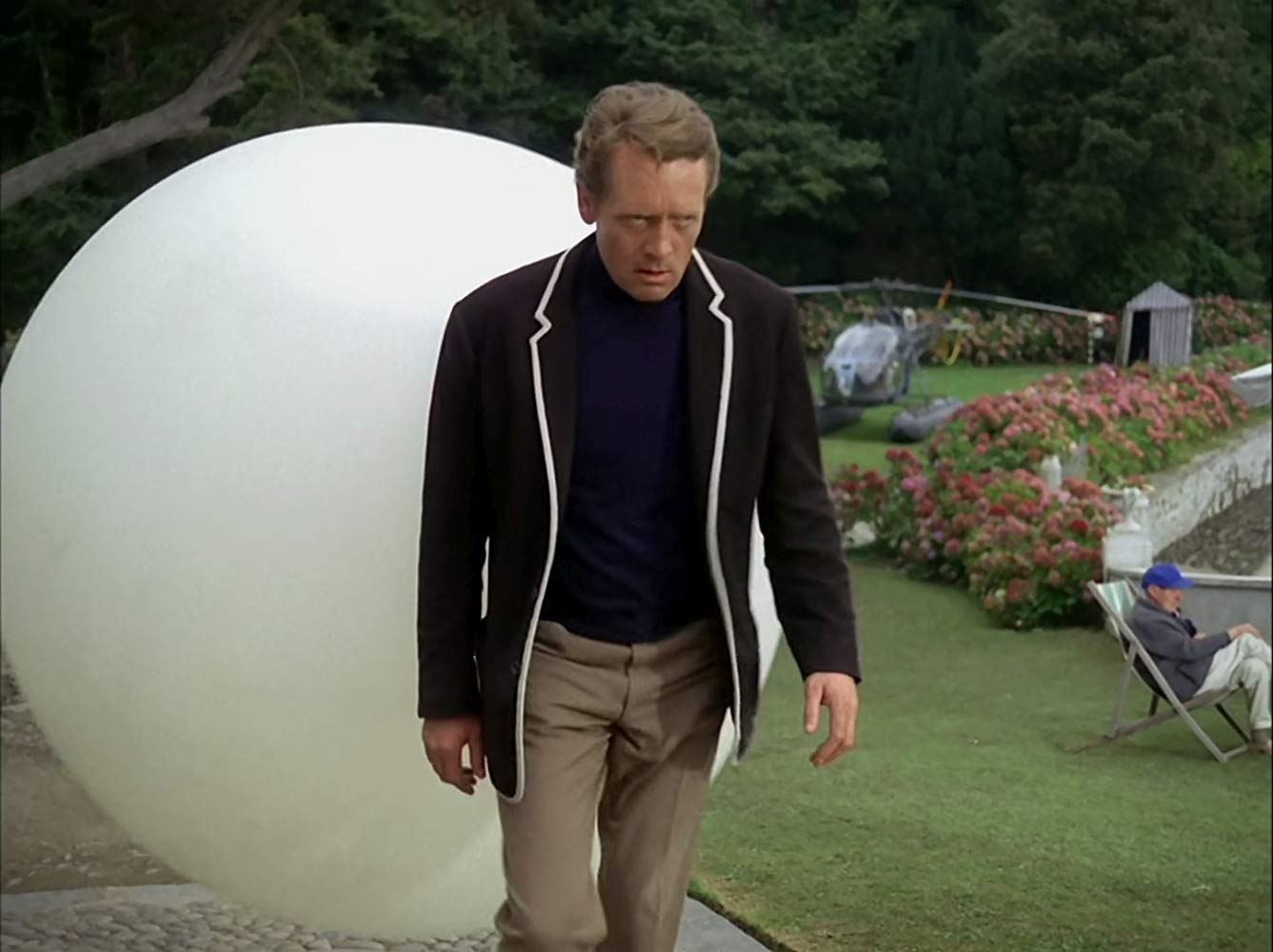
The Villagers bid each other farewell with a creepy little salute over the eye while saying “be seeing you…” in a way that implies that everyone is being watched. It’s part spy series, part sci-fi (although all the “futuristic” video conferencing, which was pure science fiction in 1967, just reads like a Zoom call today), and part funhouse mirror. It even has moments that are almost David Lynch-like in their disconnection.
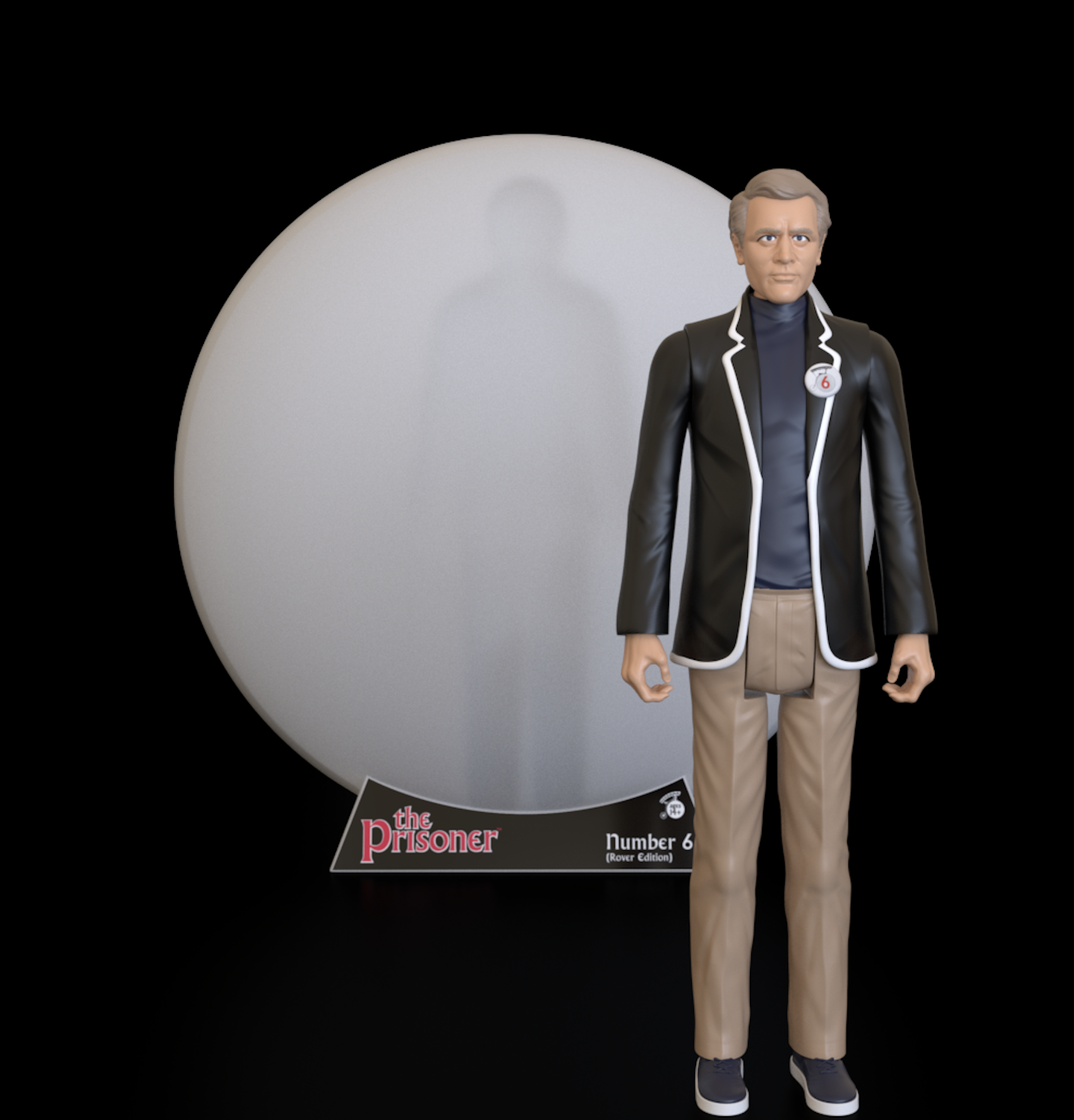
—
3. That Intro. In graduate film school at the University of Southern California, our physical production class professor gave us an assignment to make “dialogue free” short films (no synch sound). This was a very unpopular assignment. Dialogue, the class argued, is a vital element of storytelling. Our professor’s name was Peter Gould (who later became a writer on Breaking Bad and ultimately co-created the series Better Call Saul).
“You want an example of how to tell a story with no synch sound?” asked Peter. He then showed us the opening titles of The Prisoner. There, with no dialogue whatsoever, we quickly and stylishly learn the story of this poor former agent who finds himself trapped in a beautiful prison. “That,” said Peter, “is how you tell a story with no dialogue…” To this day, I’m riveted every time I watch that sequence.
—
4. The Mod Style. While the show is firmly ahead of its time intellectually, it’s very much of its time in terms of style. The London mod fashion scene of the ’60s definitely influenced everything in the series, from the sets, wardrobes, and even the egg chair Number 2 uses when making life and death decisions about the residents of the Village. The psychedelic movement influenced everything from the way the surveillance room works to the lava-lamp like undersea cave that Rover lives in. It all looks pretty amazing.
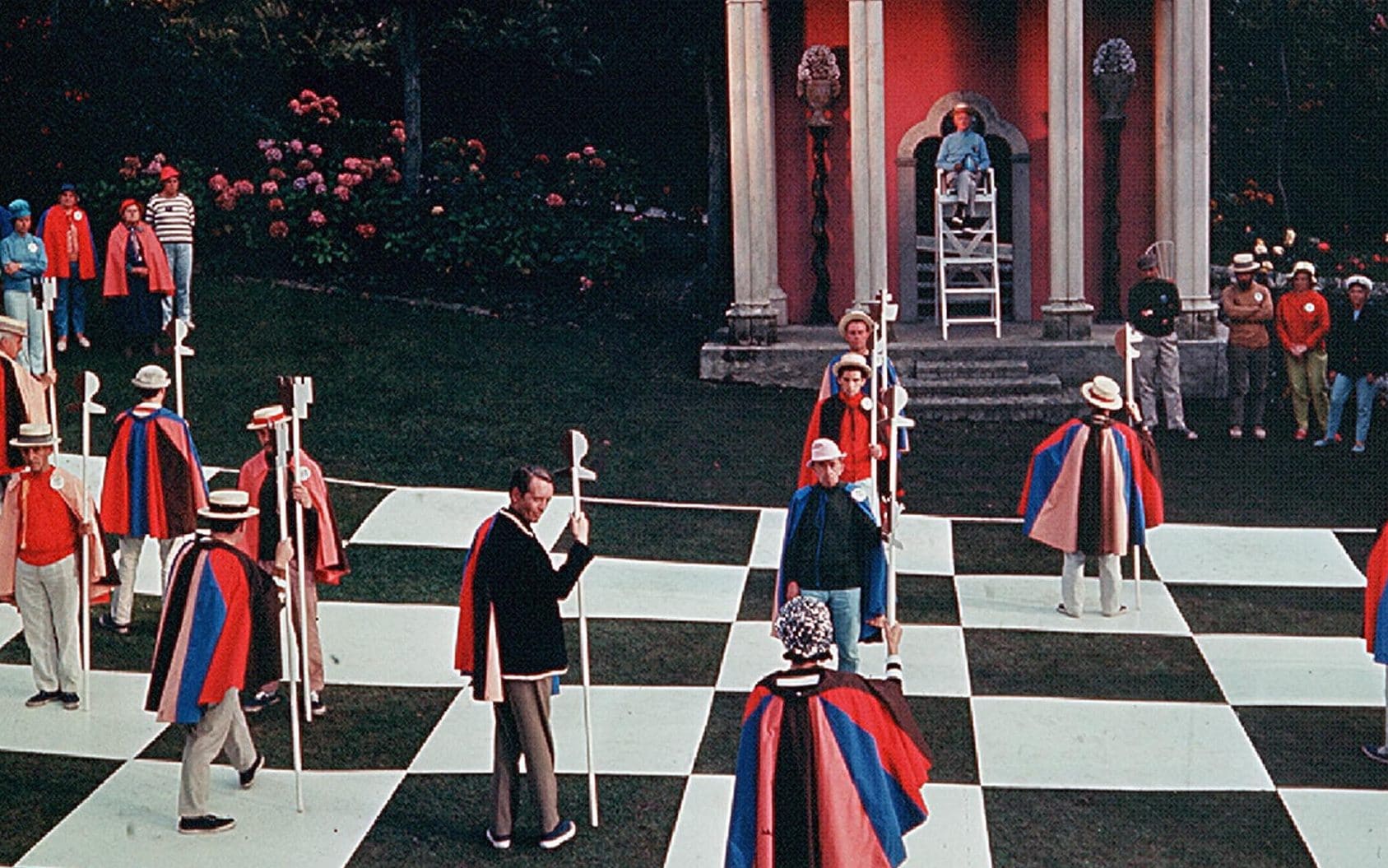
—
5. Patrick McGoohan, the Man Himself. Patrick McGoohan is fascinating in The Prisoner. He attacks the role with a performance that is in turns stoic, then bursting with kinetic force. McGoohan was a big star in 1967. He’d spent several years starring as the spy John Drake in the series Danger Man, which ran from 1960 to 1962, and then again from 1964 to 1968. It aired in the US under the title Secret Agent Man and in other non-UK territories under the titles Destination Danger and John Drake.
The role had been so celebrated that it earned McGoohan an offer to play a different spy — James Bond in Dr. No. McGoohan turned the role down, and never regretted it. So much so that later he again turned the role down when it was offered to him for Live and Let Die. McGoohan had grown sick of spy antics and wanted to crack into a series that made more of a statement.
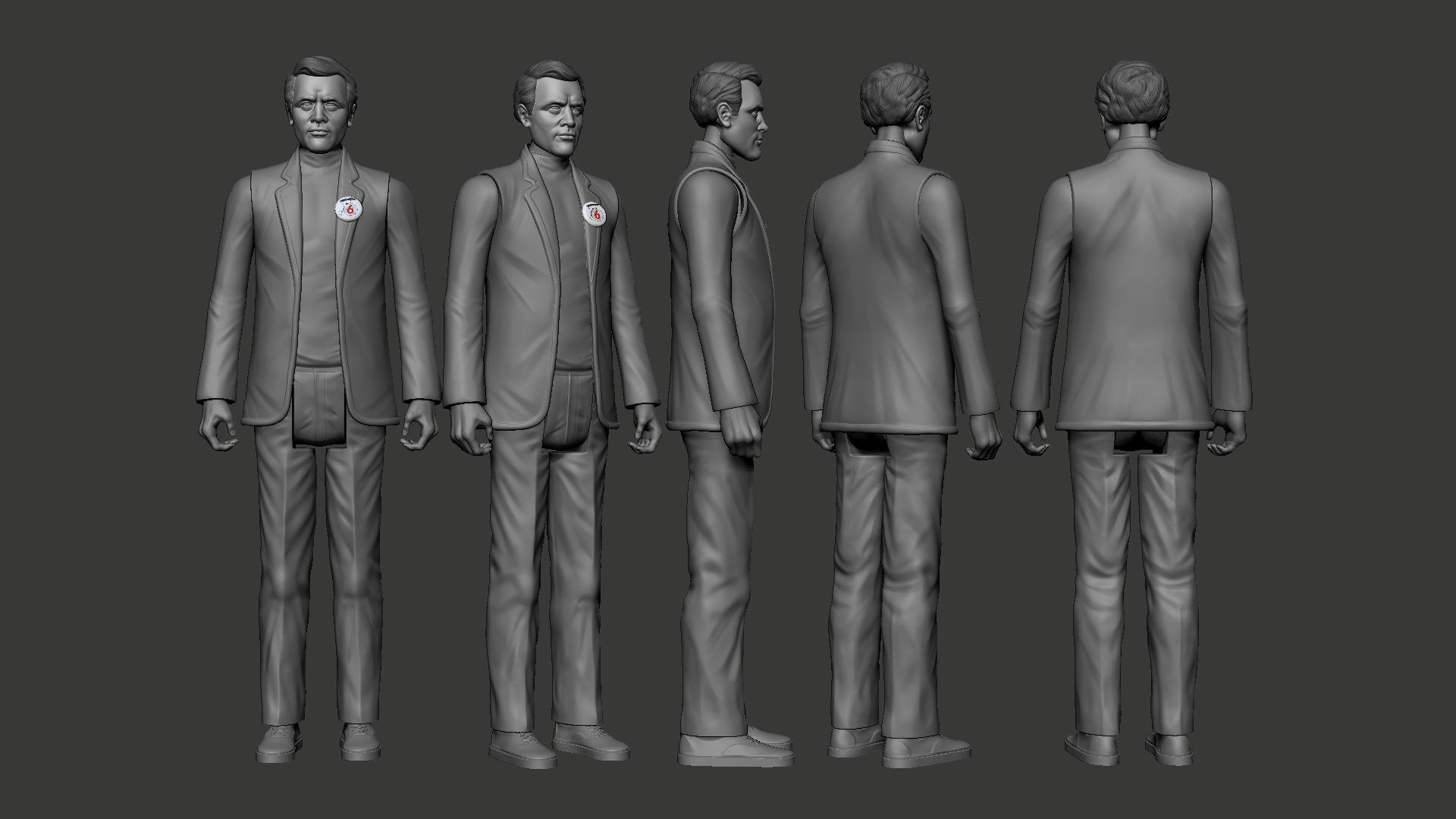
People thought he was crazy to voluntarily bring a highly successful, ratings-friendly series like Danger Man to an end. But McGoohan got the last laugh. Danger Man is largely forgotten today. The Prisoner, however, is continuously watched and re-watched by generations of fans. At only 17 episodes, the series is a pretty easy binge.
McGoohan not only created and starred in the show, he wrote and directed many of the episodes (sometimes under his own name, sometimes under pen names like “Paddy Fitz”). Any TV show is a collaboration of many different artists, but The Prisoner is as close to one man’s vision as you’ll find.
—
6. Number 2. The foil for Number 6 in almost every episode is the head of the Village, Number 2… but Number 2 keeps changing! In almost every single episode there’s a different actor playing the role. This is part of what makes the series so unsettling. Number 2 knows all the secrets of the Village — why it’s here, what purpose it serves, what side it’s on, why it needs information from Number 6… Number 2 even knows the answer to the question that Number 6 most frequently asks (“Who is Number 1?”).
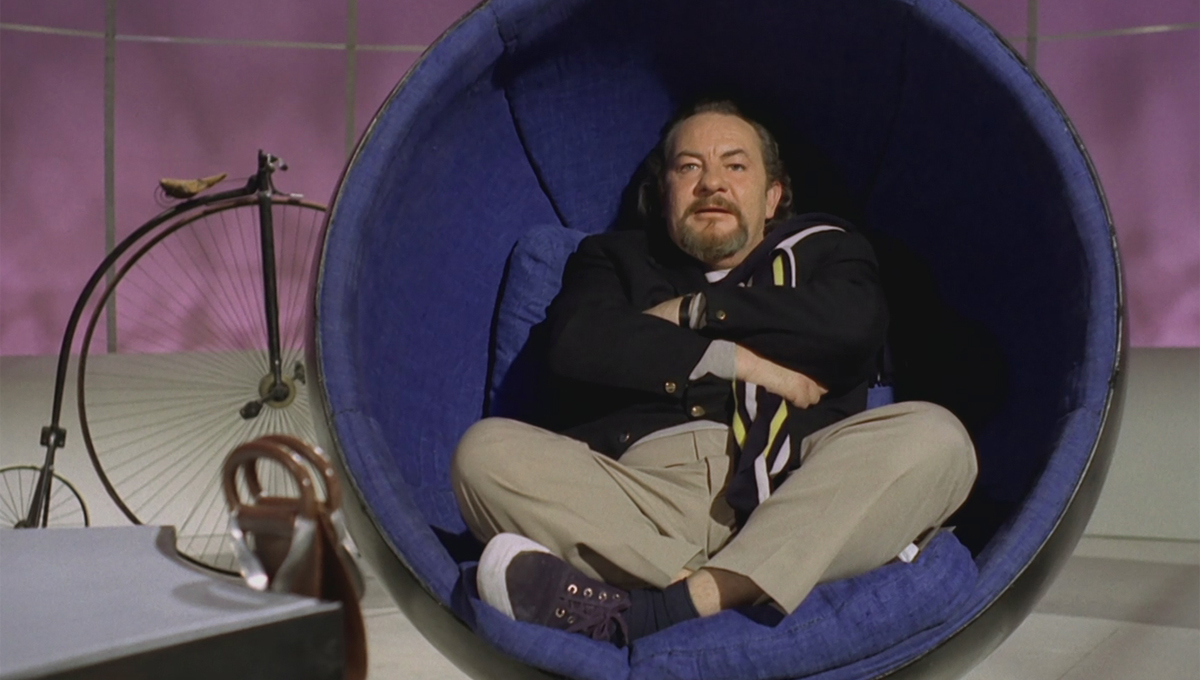
Leo McKern
But Number 2 never gives up information, instead saying sly little things like, “That would be telling.” The fact that Number 2 changes each episode — sometimes multiple times per episode — leaves us with the impression not of a small organization, but rather of a vast conspiracy working to crack Number 6.
Each new Number 2 has his or her unique spin on the character, but they all dress the same, and have the same purpose. And, of course, the rotating position means that we get to see a host of amazing ’60s British actors take the role, including Mary Morris (from A for Andromeda), Peter Wyngard (aka Klytus from Flash Gordon) and my personal favorite, Leo McKern, the only Number 2 to appear in three episodes.
—
7. That Theme Song. I dare you to not get amped up when that thunder cracks and The Prisoner’s bombastic theme starts blaring. Written by Australian native Rob Grainer, who also wrote the theme song to Doctor Who, this music is still revered.
—
8. Portmeirion. The Prisoner simply wouldn’t work if it weren’t for its setting: The Village, a bizarre “collection of architectural relics and impish modern fantasies.” This place is a prison, but it is the most beautiful prison imaginable, where the inmates are allowed to freely stroll among the wide courtyards and down to the sea. The location is a real place, called Portmeirion, tucked away in a remote part of Wales. Portmeirion exists because of the whim of a famous Welsh architect who went by the rather preposterous name of Sir Clough Williams-Ellis.
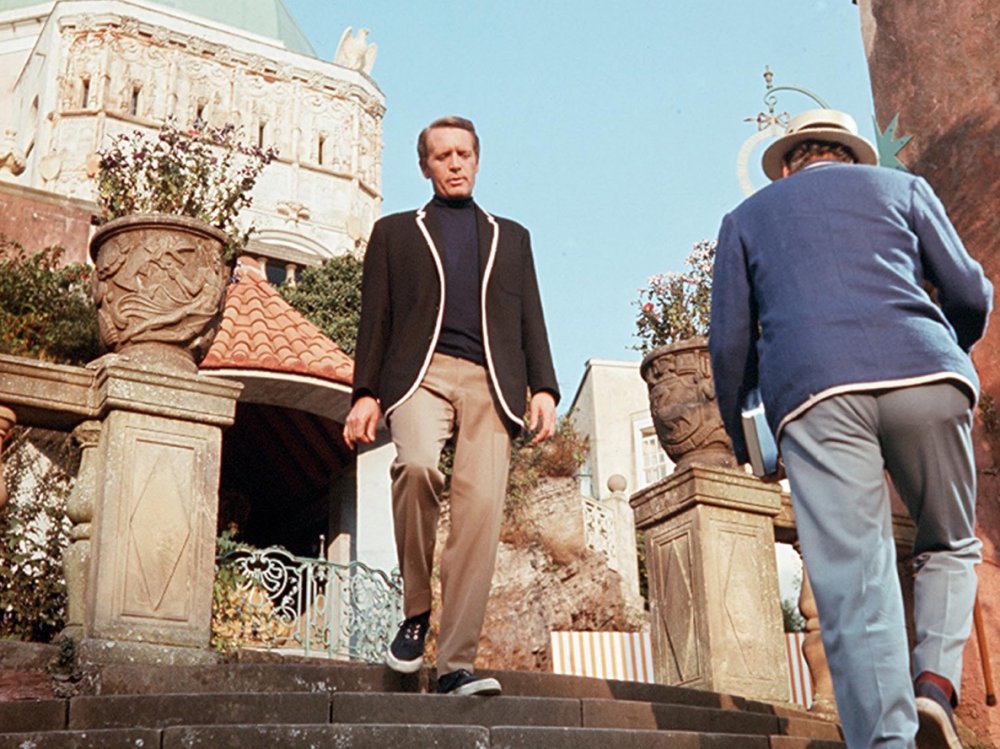
Williams-Ellis was sought after for his beautifully designed buildings that were always strategically worked into the surrounding natural environments, rather than just dropped down on top of them. When he had enough cash, Williams-Ellis started building his passion project — an entire Italianate village. He started work in 1925 and didn’t finish until 1975.
The fact that the entire village was designed by a single architect gives the whole place an oddly harmonious feel. It’s open to the public, and features both a bust of Patrick McGoohan, to commemorate the filming that took place there, and also a “Number 6 Gift Shop” located inside the building that was used as Number 6’s apartment in the show.
—
9. Iron Maiden Likes It Too. British Heavy Metal band Iron Maiden has written not one, but two songs about The Prisoner. The first, titled “The Prisoner,” was released on the 1982 album The Number of the Beast, and the second was “Back in the Village” from the 1984 album Powerslave. Reportedly, the band’s manager, Rod Smallwood got very nervous when he had to call “a bone fide superstar actor” like McGoohan in order to arrange the rights to use a clip of dialogue from the series in the song. But he didn’t need to worry. McGoohan’s response was reported to be: “It’s for a rock band? DO IT!”
—
10. Because You Are Not a Number. Let’s face it, the world wants to reduce us all to numbers. Our age. Our weight. Our Social Security number. The number in our bank account. You’ve felt that. At times, we’ve all felt that. Not being treated as an individual, with a unique value — instead being reduced to faceless digits in order to be more efficiently processed… So, you know what Number 6 means when he rages: “I will not be pushed, filed, stamped, indexed, briefed, debriefed, or numbered! My life is my own!” Or when he shouts, at the beginning of each episode: “I am not a number; I’m a free man!” Meaningfully, however, even though he makes this declaration with passion… ultimately, he is NOT a free man.
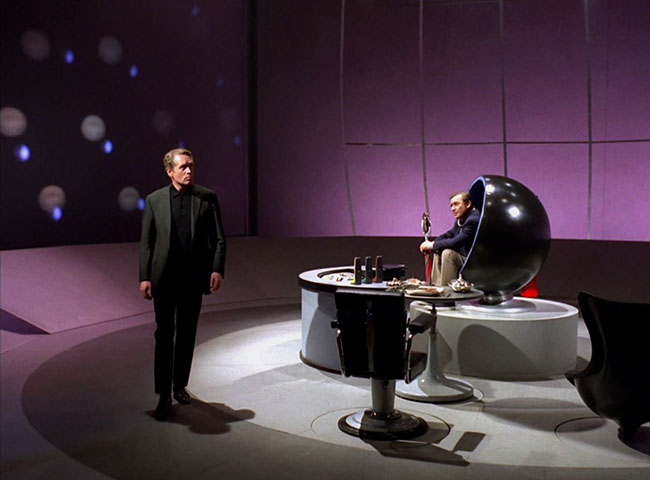
—
11. To Figure Out the Ending. Look — NO SPOILERS (if you can even “spoil” a show that’s been out for more than five decades) — but be prepared for the fact that the final episode (called Fall Out) is… well, “weird” is in understatement. Don’t get me wrong — it’s AMAZING. It’s heady. It’s avant-garde. And it’s one of the most singular episodes of TV ever created…
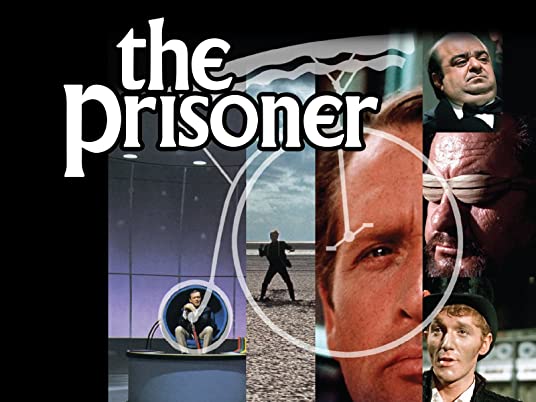
But yeah, if you’re looking for straight-forward conclusions to this show, you’re going to be frustrated. There are about as many theories about what’s really happening in that episode as there are viewers… But I’m pretty sure my theory is the correct one. After you’ve seen it, ask me. We’ll talk.
—
12. It’s Easier to See It Than Ever Before. If you’re in the US you can find The Prisoner streaming on Amazon Prime. No longer do you have to hunt around eBay for expensive, out-of-print DVD sets. Gone are the days of having to hunt for late-night airings on local PBS stations… And long, long gone are the days of hunting for VHS bootlegs in the dealer’s room of sci-fi conventions.
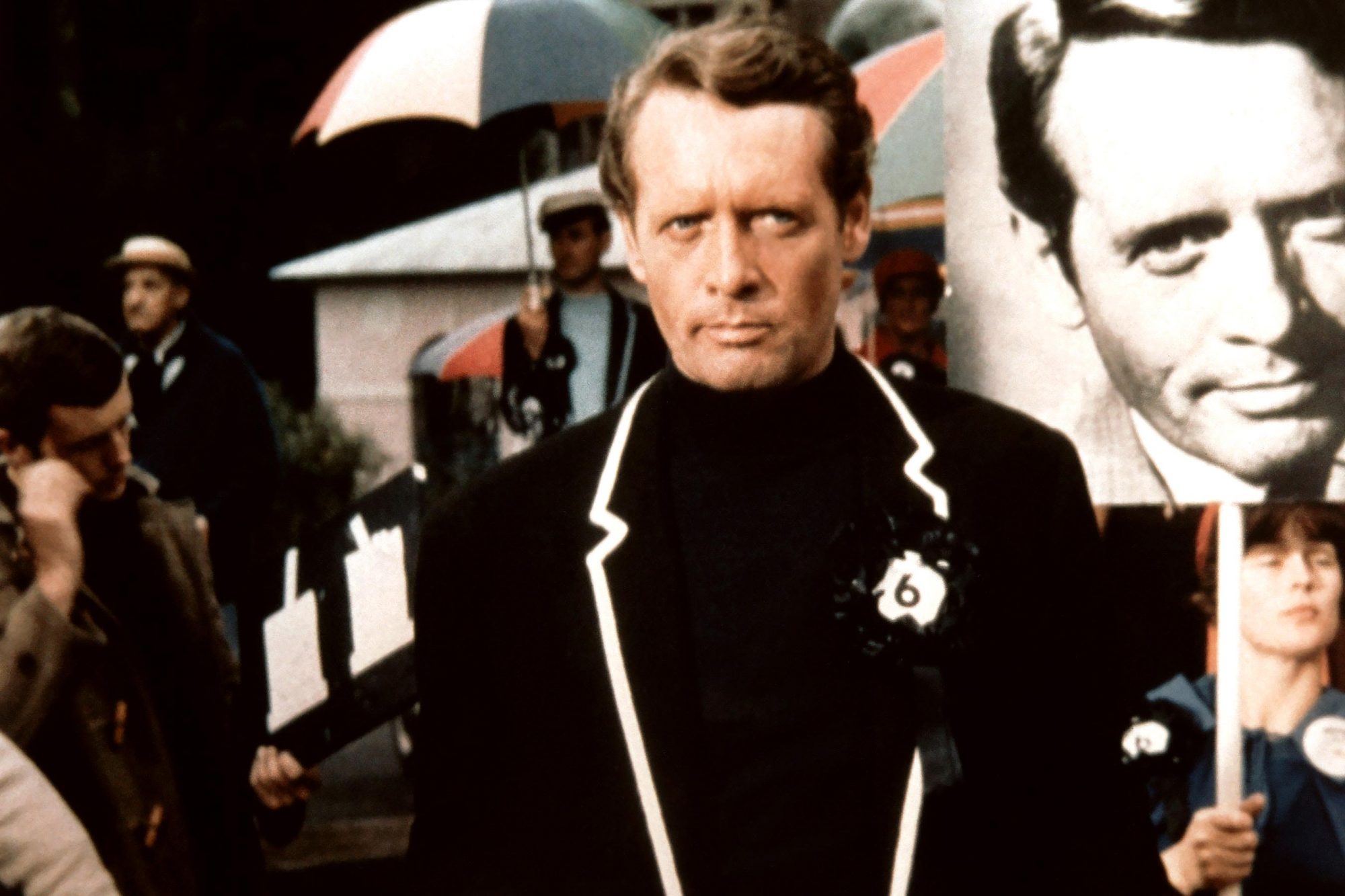
—
13. The Upcoming Prisoner Action Figure Line From Wandering Planet Toys. Yeah, OK—this is a shameless plug, but as both a fan of The Prisoner and as a toy collector, I’ve been dying to make the first officially licensed line of Prisoner action figures. So me and a like-minded fanboy friend of mine managed to land the license from ITV Studios. This is a grass-roots effort, so if you want to see the toys become a reality, support us on Kickstarter. Our page is up now, so feel free to click here.
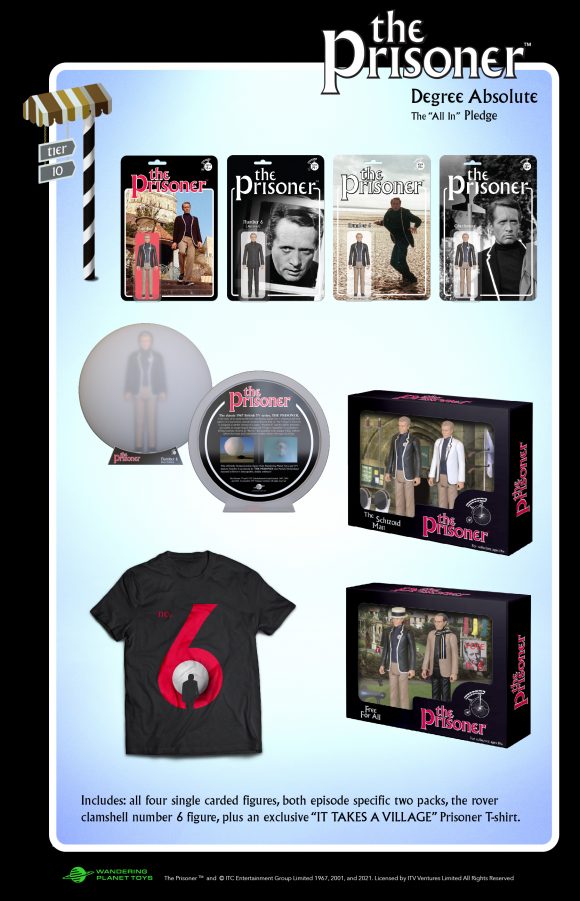
—
MORE
— Dig These 13 LOST JAMES BOND ADVENTURES. Click here.
— Why TV’s GREEN HORNET Deserves the Same Groovy Love as BATMAN. Click here.

April 19, 2021
That is one of the strangest shows I’ve ever watched.
April 19, 2021
“Secret Agent Man,” no. The show was titled “Secret Agent.” Secret agent man is merely a lyric in the show’s theme song.
April 19, 2021
I’m a huge fan of “The Prisoner” and will definitely be getting these.
However, I wouldn’t be too quick to dismiss “Danger Man” (“Secret Agent” in the USA). “Danger Man” was the best and most realistic spy series of its era. Episodes such as “Colony Three” look like precursors of “The Prisoner.” Further, many fans believe that Number 6 is actually John Drake of “Danger Man” and several episodes like “To Our Best Friend” and “Man on the Beach” show why an agent like Drake would get fed up and resign. I personally rank “Danger Man” at the very top of TV spy shows – just behind the British spy series “The Sandbaggers” (a 1970s gem that most people have never heard of)
April 19, 2021
I was fortunate to accumulate the DVD sets of “The Sandbaggers” back when they were available–it was an incredible show (which, if I remember correctly, had an interesting history of its own).
Have “The Prisoner” both on DVD as well as the original VHS clamshell boxes.
Someone should write up a piece (or 13) of all the interesting spy and scifi shows that came out of ITV studios back in the 60s and 70s…
April 20, 2021
The show ended in an unresolved cliffhanger (Will Burnside return? Did Willie die?) after creator Ian Mackintosh disappeared over the Gulf of Alaska in 1979.
April 20, 2021
My 13 Reasons:
1. Patrick McGoohan
2. The Intro
3. Patrick McGoohan
4. The Theme Song
5. Patrick McGoohan
6. The Village
7. Patrick McGoohan
8. Only 17 Episodes
9. Patrick McGoohan
10. Rover
11. Is Number 6 John Drake?
12. Patrick McGoohan
13. Timeless
April 20, 2021
I’m not so sure The Village is an island, as stated in item #1. It is bounded by “the sea” on one side and “the mountains” on the other (according the “Your Village” map shown in the series). Whether it’s an island or connected to a mainland is unclear.
April 30, 2021
The Village’s location can’t actually be described with any precision — the show itself indicates multiple different (completely incompatible) locations that could place it either on an island (e.g., “Many Happy Returns”) or on a coastal location in continental Europe (e.g., “The Chimes of Big Ben”) or within a day’s drive of London (e.g., “Fallout”).
Thus, either (1) the Village itself somehow moves (think the Island in “Lost”), (2) there are several Villages located in different places that are all designed to look similar and somehow (without it ever being mentioned on the show) the Villagers are relocated between them, or (3) the organization that runs the Village is able to seriously manipulate people’s perceptions of the Village’s surroundings to the extent of being able to alter the appearance of constellations, sun position, etc.
April 20, 2021
A question about the Kickstarter before I back it: is the “Beach Escape” version without the badge actually a different sculpt, or is the badge just painted over? That will be one of the major factors in my backing it, as the badge-free version was his usual look in the series.
That said, I’ve been a fan of The Prisoner for many years–my local PBS station used to play it late at night, and used “Hotel California” in their advertising of it (which is where I fell in love with the song).